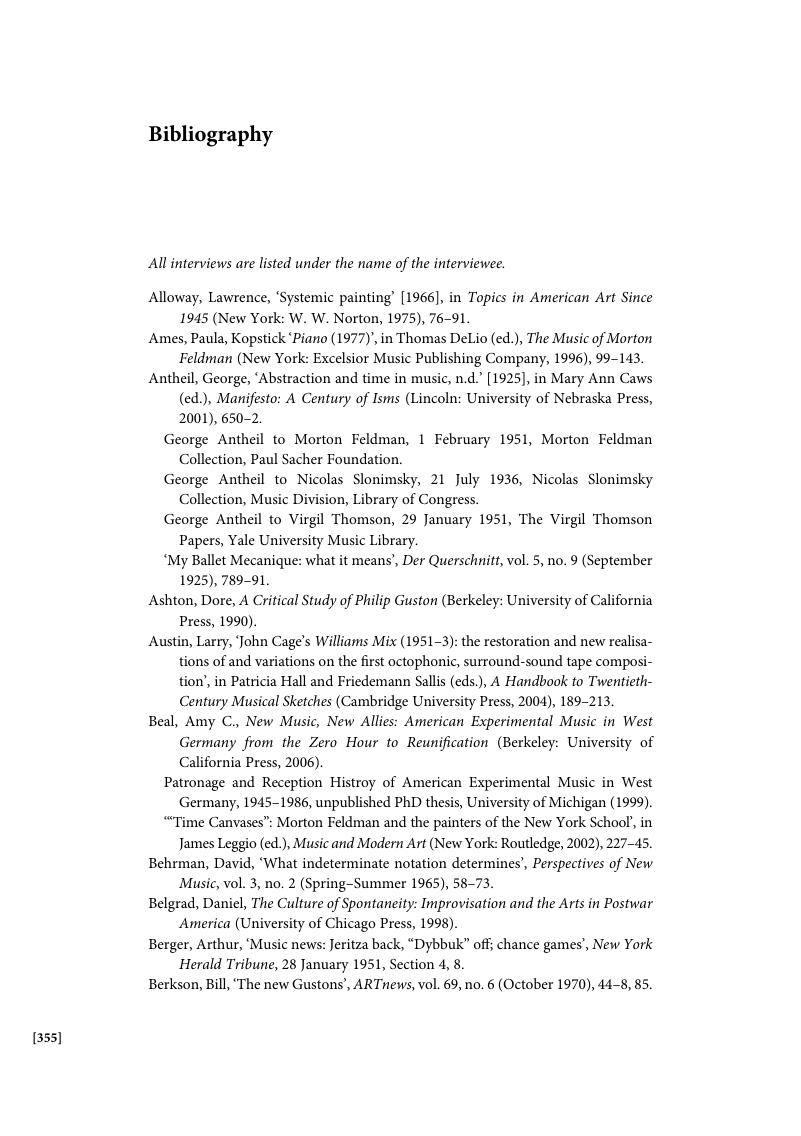
All interviews are listed under the name of the interviewee.
[A] ‘Brushed off for years, avant garde music finally gaining recognition’, Variety, 21 February 1962, 53.
[B] ‘Composers: far-out at the Philharmonic’, Time, 14 February 1964, 80.
[C] ‘Composing by knucklebone’, Time, 13 April 1962, 55–6.
[D] ‘Is it music?’, Newsweek, 2 September 1963, 53.
[E] ‘Music here this week’, New York Herald Tribune, 9 November 1952, Section 4, 8.
[F] ‘Music in the Making’, New York Herald Tribune, 10 November 1952, 13.
[G] Selections from the Private Collection of Robert Rauschenberg (New York: Gagosian Gallery, distributed by Rizzoli International Publications, 2012).
[H] ‘Sound of cybernetics’, Newsweek, 17 February 1964, 88.
To save this book to your Kindle, first ensure [email protected] is added to your Approved Personal Document E-mail List under your Personal Document Settings on the Manage Your Content and Devices page of your Amazon account. Then enter the ‘name’ part of your Kindle email address below. Find out more about saving to your Kindle.
Note you can select to save to either the @free.kindle.com or @kindle.com variations. ‘@free.kindle.com’ emails are free but can only be saved to your device when it is connected to wi-fi. ‘@kindle.com’ emails can be delivered even when you are not connected to wi-fi, but note that service fees apply.
Find out more about the Kindle Personal Document Service.
To save content items to your account, please confirm that you agree to abide by our usage policies. If this is the first time you use this feature, you will be asked to authorise Cambridge Core to connect with your account. Find out more about saving content to Dropbox.
To save content items to your account, please confirm that you agree to abide by our usage policies. If this is the first time you use this feature, you will be asked to authorise Cambridge Core to connect with your account. Find out more about saving content to Google Drive.